The Best New Indie LGBTQ Nonfiction
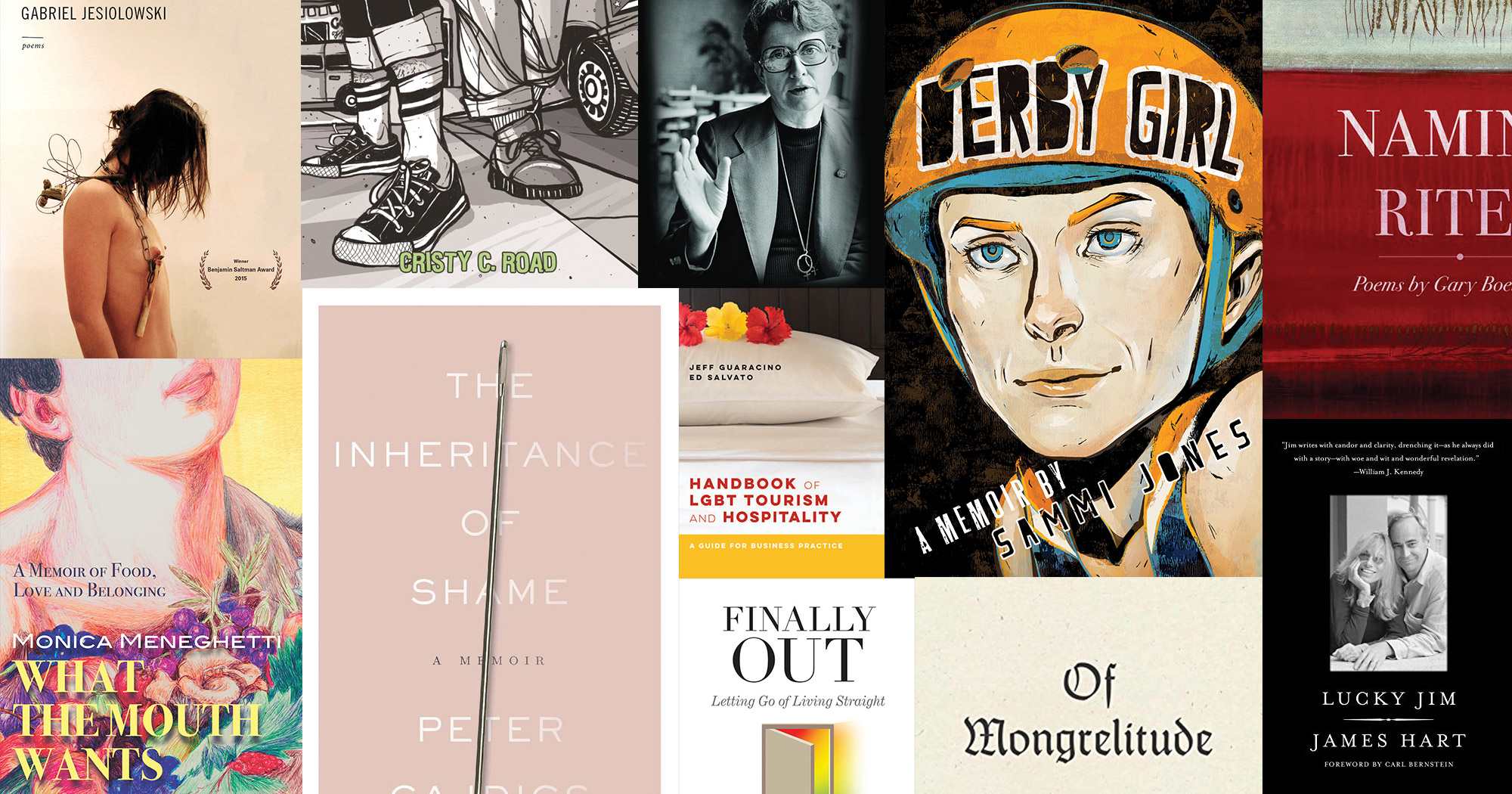
Following are reviews of some of the best recent indie LGBTQ nonfiction titles, reviewed in our April 2017 special LGBTQ section.
What the Mouth Wants
A Memoir of Food, Love and Belonging
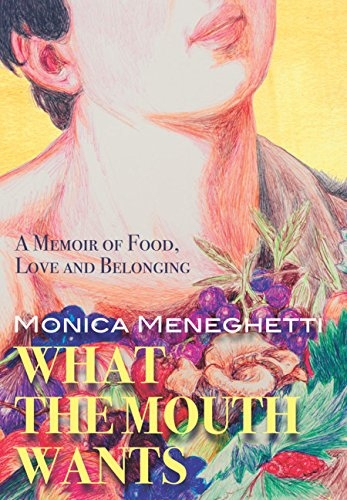
Monica Meneghetti
Caitlin Press
Softcover $22.95 (192pp)
978-1-987915-35-8
Buy: Local Bookstore (Bookshop)
What the Mouth Wants expresses with eloquent candor that while there are boundaries and behaviors to challenge, others of flesh and blood are sometimes best left alone.
Through swift, sensual chapters, Monica Meneghetti’s What the Mouth Wants: A Memoir of Food, Love and Belonging details a life lived on many levels. The author, part of a Canadian Italian immigrant family, is also bisexual. Her memoir focuses on discovering her own complex personal identity while maintaining a unique appreciation for her ethnic background.
A passion for food vibrantly colors Meneghetti’s recollections, starting from childhood as she watches her mother chop herbs and garlic and stir simmering pots of minestrone. The family cuisine features gelato, risotto, cheeses, olives, homemade pasta, and steamed black mussels, their tightly clamped shells now open like “books left ajar,” allowing “glimpses of private life.” Meals were not to be interrupted by phone calls or other distractions, and while dinner talk might flare into angry debate, the food was to be savored with respect.
Meneghetti’s mother is another integral part of the story, her presence solidly nurturing, with occasional moods of vulnerability or volatility. Beyond the family table is the world at large, a place of uncertainty but also excitement and exploration. Early on, Monica senses that she’s different, with writerly aspirations and intense crushes on both sexes. While as a young woman she sees herself as a “geeky Italian girl” who pursues relationships with men, her desires eventually lead her to bisexual and polyamorous involvements.
Meneghetti’s ultimate family unit will include her male and female lovers, the trio living together in an open-minded, open-hearted arrangement. New traditions are established, including new holiday dishes in combination with older recipes. Meneghetti realistically and ruefully notes how she was not able to tell her father about her sexuality, due to his failing health and her concerns that he would see her as an even “queerer version of queer.”
What the Mouth Wants expresses with eloquent candor that while there are boundaries and behaviors to challenge, others of flesh and blood are sometimes best left alone.
MEG NOLA (March 27, 2017)
Finally Out
Letting Go of Living Straight
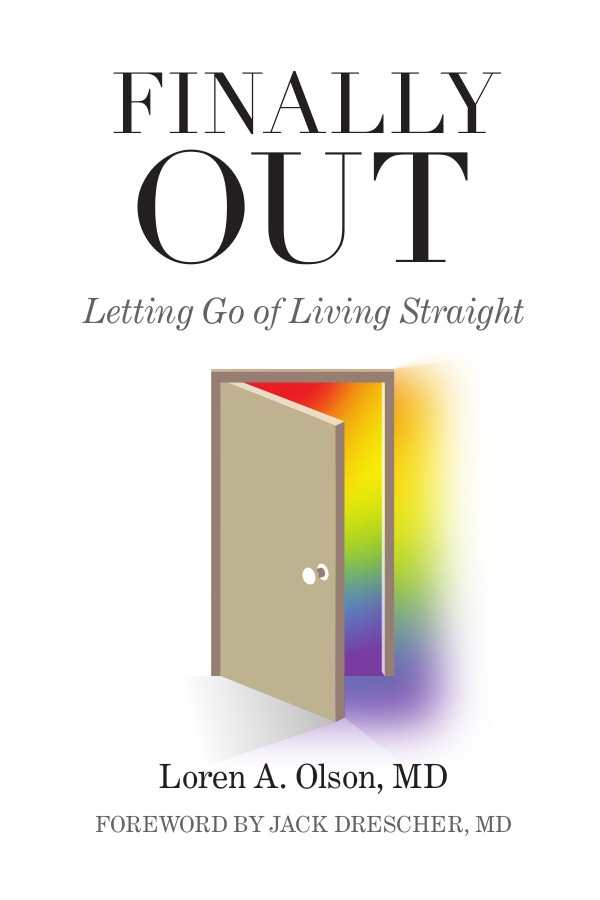
Loren A. Olson
Oak Lane Press
Softcover $15.95 (304pp)
978-0-9979614-3-0
Buy: Local Bookstore (Bookshop)
Compassion is key in this book that serves to inspire those within the LGBTQ+ community to see that everyone’s struggle is different.
The second edition of Loren A. Olson’s Finally Out: Letting Go of Living Straight achieves an expert balance between the genres of memoir and self-help to advise and comfort newly out or closeted gay men later in life. This edition builds upon the 2011 edition by actively being more inclusive, addressing some concerns of bisexual erasure and biphobia, and recognizing recent strides in LGBTQ+ rights, while also acknowledging that the fight is not over.
Olson uses heartrending personal experiences to offer insight into the specific isolation and difficulties for gay men coming out when their lives are primarily woven into a heterosexual community, sometimes with wives and children. Through psychiatric theory, cultural and historical context, and personal anecdotes, Olson successfully comforts and validates this isolated community.
By using the phrase “men having sex with men” (MSM) rather than “gay,” Olson highlights that most MSM are not out, and successfully includes them in the conversation. This inclusiveness is important, as is his recognition of the geographic bounds of an active gay culture and ageism.
Some of the language used does reinforce the hetero/homosexual binary that could be interpreted as not only bisexual erasure, but failing to include others along a spectrum of sexual orientations and gender identities. Olson rejects the linear idea of a continuum and makes a good case for “a complex matrix of self-expression.”
The book is an extremely useful and insightful resource for gay men, and it includes pertinent information for more in-depth research. As Olson acknowledges, there is much division and misunderstanding within the LGBTQ+ community, and the book serves to inspire those within that community to see that everyone’s struggle is different. Compassion is key.
While Olson mainly focuses on issues of gay men coming out later in life, the book is useful for all members of the LGBTQ+ community, their loved ones, and their allies alike.
PAIGE VAN DE WINKLE (March 27, 2017)
Indestructible
Growing up Queer, Cuban, and Punk in Miami
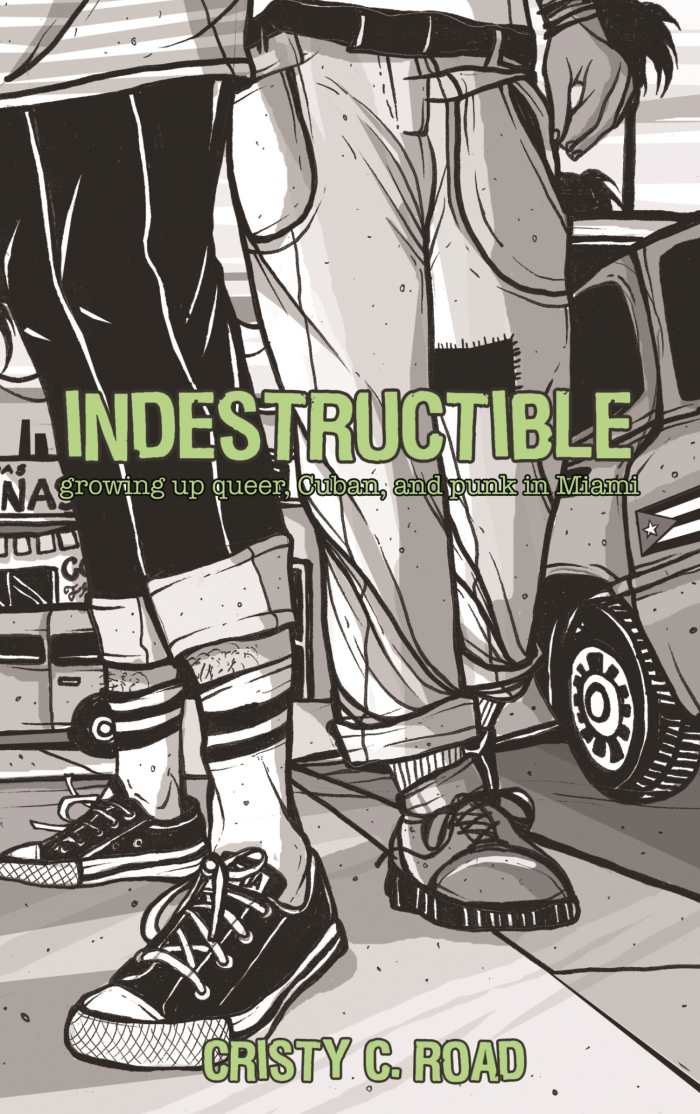
Cristy C. Road
Microcosm Publishing
Softcover $9.95 (95pp)
978-1-62106-101-4
Buy: Local Bookstore (Bookshop)
Indestructible is a vivid and highly personal account of Cristy’s journey to adulthood.
Adolescence is a turbulent time for anyone, but when you are a queer Latina millennial with a unibrow, who likes Aerosmith and punk rock, there are additional challenges. Indestructible, Cristy C. Road’s graphic-novel memoir of coming of age in Miami, is an edgy, honest, and nuanced chronicle of her young-adult years, accented with her highly textured, monochrome illustrations.
Though she describes a feminist mother and other supportive relatives, Cristy rebels against her family’s cultural expectation that queerness should be repressed. She’d rather dye her hair green and use live reptiles as earrings than go to a nail salon and is frustrated that “ideas like vegetarianism and resisting beauty standards only existed in white America.” She wants to stay out late at night, drink beer, and talk about sex, things which are only considered acceptable male behaviors among her peers and make most of her friends view her as a “discomfited novelty.”
The narrative is often insightful and reflective, and there are many colorful conversations between her and her circle of friends. These other “misfits” are listening posts and guides to an alternative and optimistic future where the heroine can shed her self-doubts and grow into someone other than who society and family expect her to be. Cristy’s account is a positive one for young-adult readers struggling with their identity or sexuality, but there is frank discussion of mature topics like masturbation and drug use, and the language is laced with salty and sexual slang.
Road’s illustrations are the perfect window into her youthful life. They have an overall punk-rock, cartoony feel, but look past the dramatic composition and bold outlines and show how the artist magnifies the beauty in what typically might be viewed as ugliness—stubble on Cristy’s arms, lacy detail in music posters on a bedroom wall, grit on an urban sidewalk.
Indestructible is a vivid and highly personal account of Cristy’s journey to adulthood, with positive messages of fighting against self-hatred and cultural oppression and encouraging female solidarity over competitiveness.
RACHEL JAGARESKI (March 27, 2017)
Lucky Jim
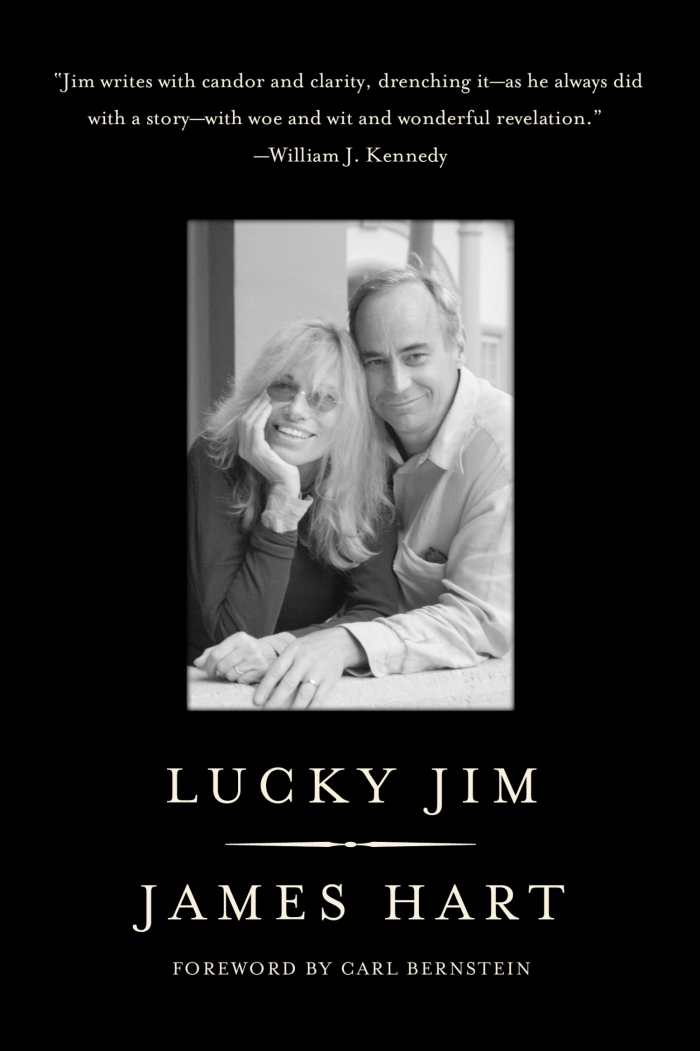
James Hart
Cleis Press
Softcover $18.95 (244pp)
978-1-62778-214-2
Hart deftly describes the life of an alcoholic and the challenging but rewarding life of recovery.
From journeying down the road to priesthood to dinners with the Clintons to sex-fueled crack addiction, Jim Hart has truly lived a life of extremes. Lucky Jim is an appealing memoir by an ordinary Joe who hailed from “a shanty Irish enclave in an otherwise Jewish city by the sea” and ended up as Mr. Carly Simon. This memoir testifies that even love, fame, and success are no cure for the lies we tell ourselves.
Raised in Long Beach, California, Hart experienced a childhood that was filled with fear and anxiety. His hard-drinking father was a frightening presence, which led fourteen-year-old Hart to seek solace in faith and enter the Graymoor seminary. Religion and faith weave a strong thread through Hart’s life, and he pays homage to the beauty and depth of that life through philosophical examination and lush, lyrical language. Along with his early path to priesthood, there are glimpses of Hart’s homosexual feelings and his alcoholism, intertwined with his profoundly fulfilling relationships with men.
Marriage to his first wife lured Hart out of his collegiate seminary life. He describes the birth of their severely disabled child, Eamon, his divorce and descent into crippling alcoholism, and his recovery and second marriage. Hart deftly describes the life of an alcoholic—the bars, the denizens of the drinking community, the many rock bottoms—and the challenging but rewarding life of recovery. His relationship to Carly Simon teems with name-dropping and humorous anecdotes. Hart’s repression of his homosexuality becomes problematic to their marriage, and he again descends into addiction, this time with crack cocaine.
Lucky Jim swings from bravery to bragging at times, but the redemptive moments of this memoir are stellar.
MONICA CARTER (March 22, 2017)
Derby Girl
A Memoir
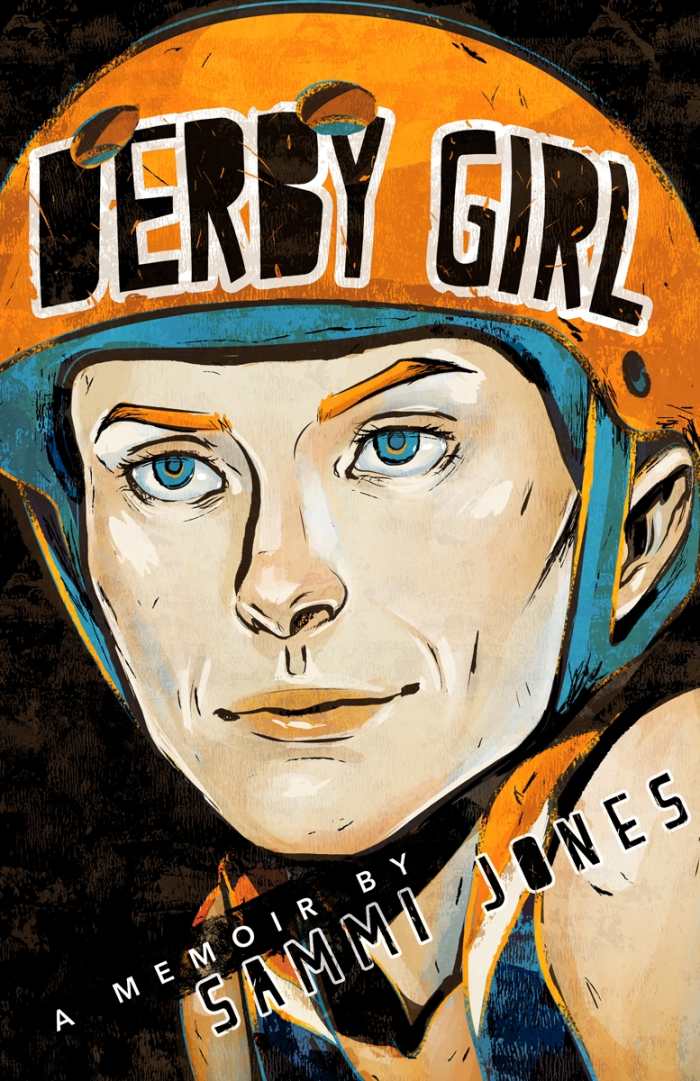
Sammi Jones
North Dakota State University Press
Hardcover $25.00 (190pp)
978-0-911042-97-9
Buy: Local Bookstore (Bookshop)
Jones’s story has come full circle: she’s clean, out of the closet, and back home.
For Sammi Jones, an MFA program in creative writing may have taken her to the inauspicious location of Fargo, North Dakota, but it was joining a roller derby team that kept her sane. Her energetic memoir, Derby Girl, weaves together her roller-derby practice with waking up to her sexual identity and drinking problem.
Jones was two years into graduate studies at Minnesota State University Moorhead when she braved grueling three-hour tryouts to make the Fargo-Moorhead Derby Girls league. After months of practice, skating grew effortless, and she felt accepted by this motley bunch of women with odd derby-specific nicknames (hers is “Toni Crush”) and vocabulary. Yet all along she knew she wasn’t being honest with herself about her sexuality and alcoholism.
The book shrewdly uses the lingo and format of a roller-derby bout to provide its structure: sections are labeled Turns 1 through 4, and a “Timeout: Derby 101” interlude in the middle gives diagrams and photographs that explain the gear, track, and plays.
The memoir’s short, titled chapters function almost like mini-essays. Some vignettes give glimpses into Jones’s past—her Catholic upbringing; an earlier drunk-driving incident—or contrast her time on the derby B travel team with her jobs cleaning houses and working on a local magazine. One of the standout pieces, a two-pager titled “Jones Generations,” gives third-person remarks on the author’s place in her family order. Other chapters take the form of text messages with her “derby wife” Rachel, or phone conversations with her mother.
In fact, it was via drunken text messages that the author finally came out to her mother. Although the book has a light tone on the whole, it doesn’t shy away from such serious matters.
The ending feels somewhat sudden, but in a way, Jones’s story has come full circle: she’s clean, out of the closet, and back home. This gives her memoir thematic unity and significant indie-movie-like charm.
REBECCA FOSTER (March 27, 2017)
The Inheritance of Shame
A Memoir
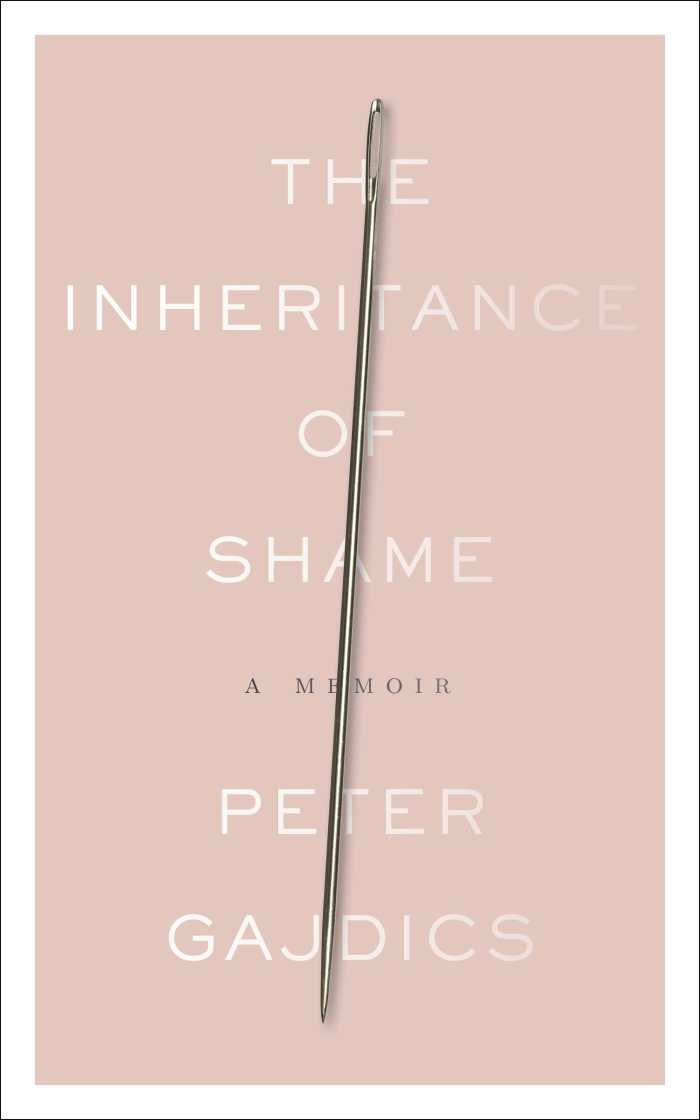
Peter Gajdics
Brown Paper Press
Softcover $17.99 (360pp)
978-1-941932-08-7
This uncomfortably true account of homophobia to the extreme is raw and unforgettable.
Peter Gajdics’s The Inheritance of Shame follows the gay author’s struggle from confused teen to lost young adult. Lured by the forcefully paternal Dr. Alfonzo into an isolating experiment to turn him straight, Gajdics unknowingly enlists in the torture known as conversion therapy. Alfonzo aims to take his highly sedated patients back to a childlike state, and to rebuild them through violent and disturbing therapy sessions.
Grotesque images of Alfonzo’s torture are odd, vivid, and chillingly memorable; perhaps most disturbing is his instruction for Gajdics to smell his own feces in a film canister each time he thinks something gay. The almost journalistic prose serves well in depicting Gajdics’s physical and mental deterioration as he is prescribed higher and higher doses of antidepressants and sedatives, which lead him to succumb to Alfonzo’s eccentric demands.
Occasionally the distance the author has between his unbalanced mind-set during the gruesome therapy and his current healthy state of mind make the events somewhat less engrossing. Alfonzo’s dialogue often seems cartoonishly disturbed and generic rather than charismatic and persuasive.
While Gajdics’s trauma is certainly specific, his feelings of hopelessness, his flailing attempts at finding human connection, and his confused demonization of his parents are universal struggles. His wry reflections on this are notable, particularly “and if I wasn’t happy, at least I was distracted.”
With its stark presentation of the tangible effects of not only homophobia, but xenophobia—his mother’s time in a concentration camp, and his father’s own traumatic WWII experience—this book is appallingly appropriate in these times.
In a book that celebrates and embodies the power of the medium of writing in a pure way, Gajdics uses the written word to heal from trauma, to reconcile with his parents, to unearth their own suffering in World War II, and as an unforgettable call for compassion. His passionate writing makes the book not only an intriguing read but an important one in the literary and political realms.
This uncomfortably true account of homophobia to the extreme is raw and unforgettable.
PAIGE VAN DE WINKLE (March 27, 2017)
Indomitable
The Life of Barbara Grier
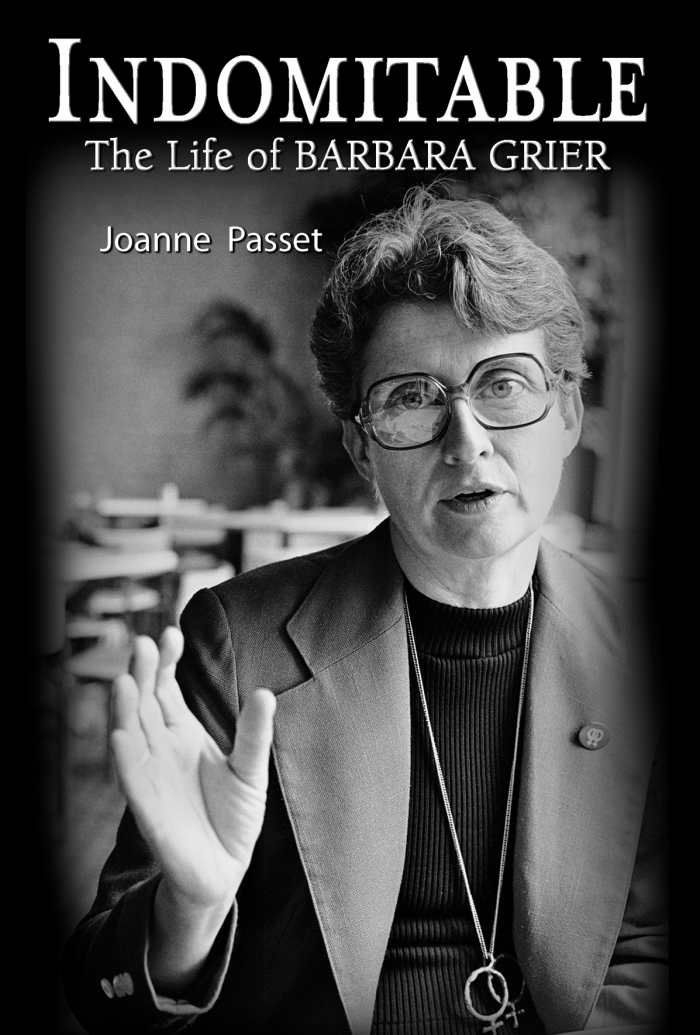
Joanne Passet
Bella Books
Hardcover $28.95 (338pp)
978-1-59493-471-1
Buy: Local Bookstore (Bookshop)
Always enthusiastic, often imperfect, Grier helped develop and sustain an industry, not just for herself, but for so many others.
Joanne Passet’s Indomitable: The Life of Barbara Grier presents the life of LGBTQ publishing pioneer Barbara Grier in tandem with the development of the LGBTQ press itself. Passet’s choice shows how much she understands the woman at the heart of Indomitable—a bibliophile whose passion was her work and work her defining passion. Laid out in unflinching yet surprisingly compassionate prose, this biography portrays a woman who valued, more than anything, written representations of her community.
Grier brashly sought out both women and lesbian literature in the 1940s, a time when such activities were illegal. She soon realized her formative experiences as an out lesbian—often so counter to the closeted women she would meet—were unique. This realization led Grier to believe literary representation was a potent key to validation.
Always a voracious reader, in the 1950s she began collecting everything related to lesbian publishing that she could find, eventually amassing more than 15,000 books as part of a collection that expanded over time to include a wide range of LGBTQ literature, correspondence, periodicals, and journals. Collecting introduced Grier to the early gay and lesbian press, first as a newsletter subscriber and frequent letter-writer, then as a columnist, writer, and reviewer, and, finally, as the dynamic force behind Naiad Books.
Passet’s easy, accessible style belies the completeness and rigor of her research. She depicts Grier as a complex, often controversial figure who possessed strong, sometimes ruthless focus. It’s obvious how completely literature and lesbianism defined Grier, so, it’s fascinating, though not terribly surprising, how deeply the field of LGBTQ publishing bears her stamp.
Always enthusiastic, often imperfect, Grier helped develop and sustain an industry, not just for herself, but for so many others. The combination makes Indomitable a fascinating, must-read addition to the genre.
LETITIA MONTGOMERY-RODGERS (March 27, 2017)
Handbook of LGBT Tourism and Hospitality
A Guide for Business Practice
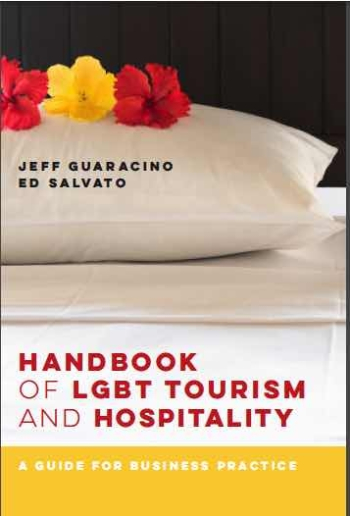
Jeff Guaracino
Ed Salvato
Columbia University Press
Softcover $45.00 (190pp)
978-1-939594-17-4
Buy: Local Bookstore (Bookshop)
What the handbook proves unequivocally and strikingly is that the LGBT community is not going away, and businesses must take notice or be left behind.
The Handbook of LGBT Tourism and Hospitality, by Jeff Guaracino and Ed Salvato, impressively establishes itself as an essential and informative guide for those in the hospitality, marketing, and advertising industries.
The book expertly proves the LGBT sector to be an economic, political, and societal force that cannot be ignored. The authors have compiled thought-provoking data and smartly executed interviews with leaders in hospitality.
The book gives historical context by charting the gains in LGBT rights—and the accompanying growth of the LGBT community as an economic sector—to show the exceptional loyalty and principled nature of the spending habits of the community. This makes a persuasive case that businesses that genuinely reach out and include the gay community will be successful.
The handbook makes a remarkably effective apolitical case for including an expansive LGBT community with significant spending power. However, the political and ideological implications of this are not lost on this guide. In order to be genuinely connected to the LGBT community, the handbook insists, companies must work to provide comfortable spaces for that community through actions like sensitivity training and protecting LGBT employees from discrimination.
This message for tolerance and acceptance of the LGBT community is tied up with maintaining relevance with millennials, and the overall future of the business. What the handbook proves unequivocally and strikingly is that the LGBT community is not going away, and businesses must take notice or be left behind. In a tumultuous time of uncertainty for LGBT rights, it is refreshing to see such statements boldly proven through solid facts.
This guide successfully serves as a concise and thorough guide to understanding the LGBT consumer/tourist, and offers advice flexible enough to to be pertinent to all aspects of hospitality. The subject is handled with a brevity and perspicacity that makes it easy to navigate and utilize.
Through compelling research and testimony, this handbook is a useful and effective guide for existing and newly established hospitality professionals to tap into LGBT hospitality.
PAIGE VAN DE WINKLE (March 27, 2017)
Foreword Reviews
